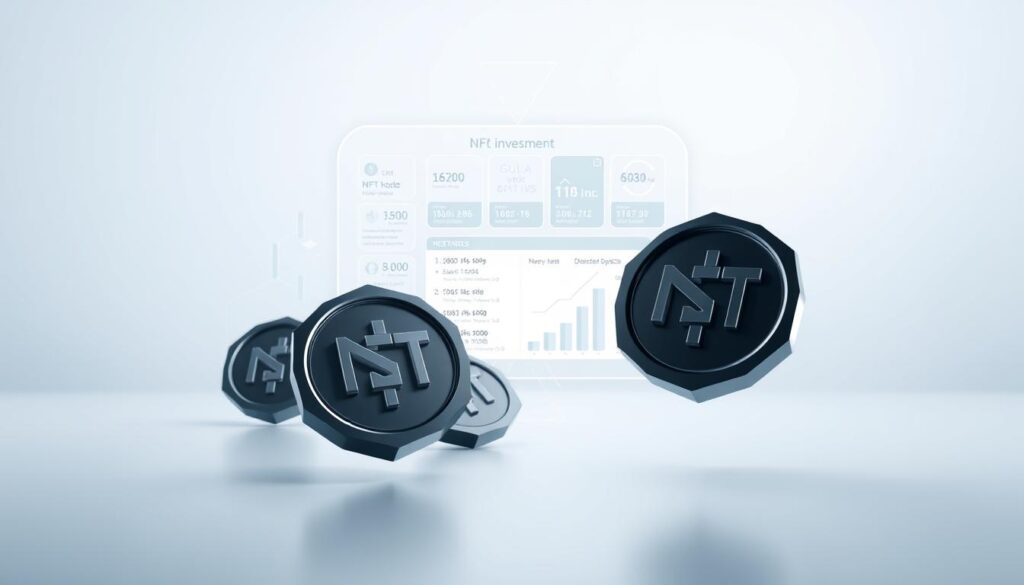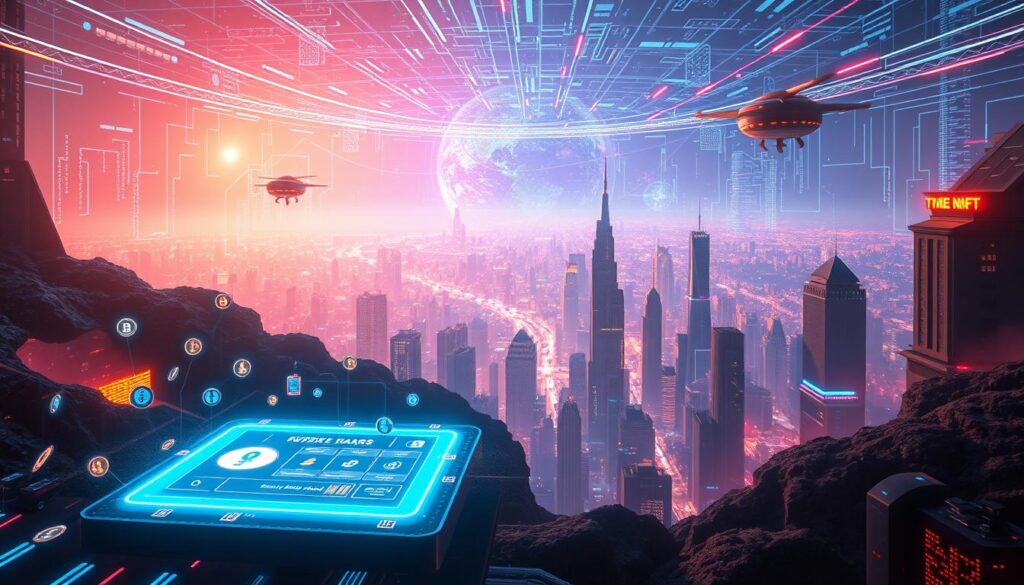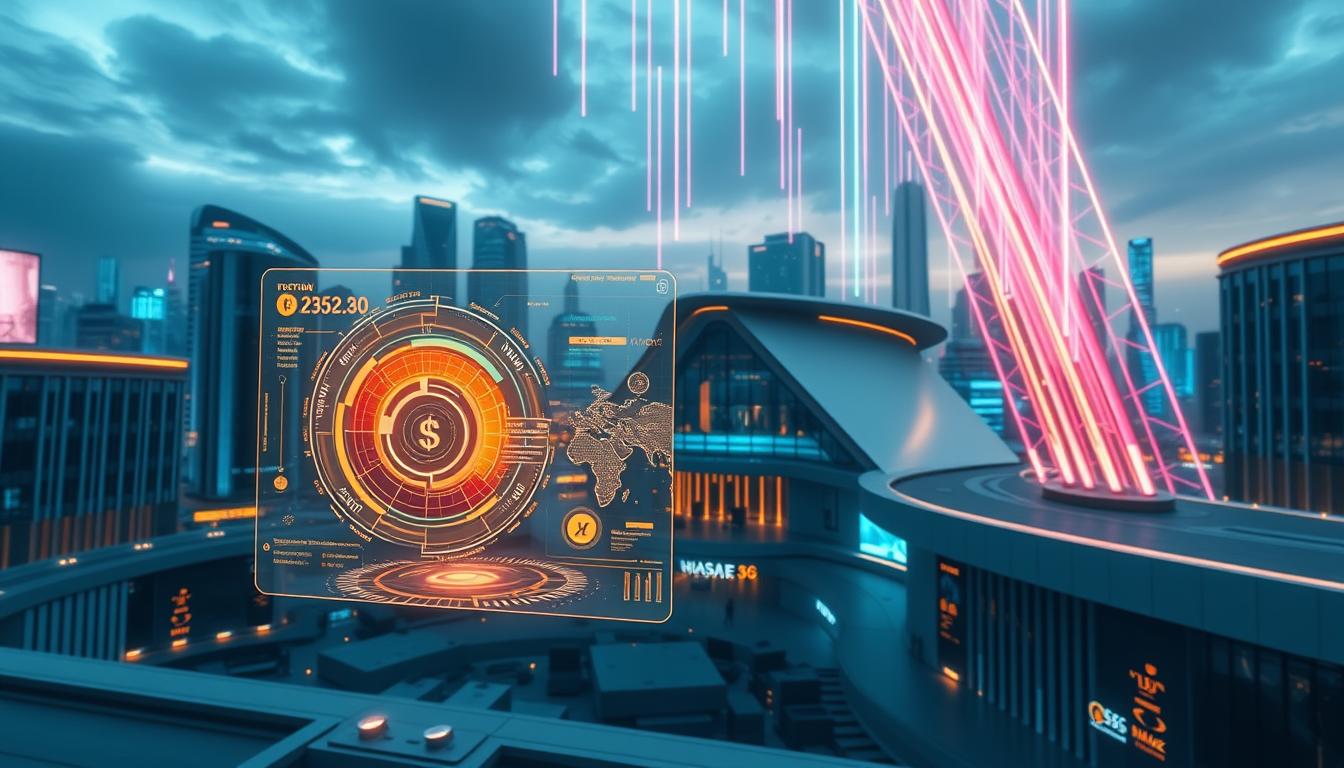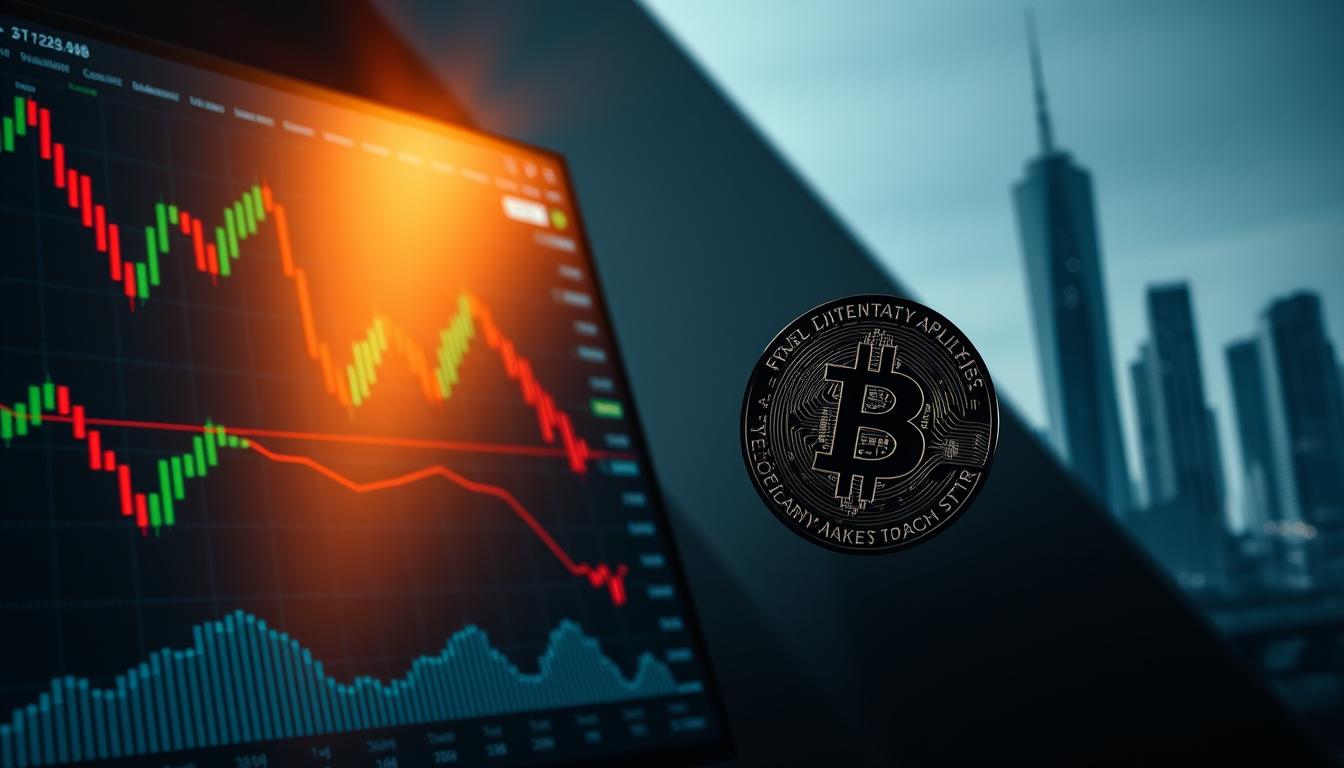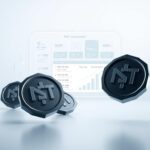Now Reading: Metaverse Land NFT Virtual Real Estate Development Monetization Strategies Explained
- 01
Metaverse Land NFT Virtual Real Estate Development Monetization Strategies Explained
Metaverse Land NFT Virtual Real Estate Development Monetization Strategies Explained
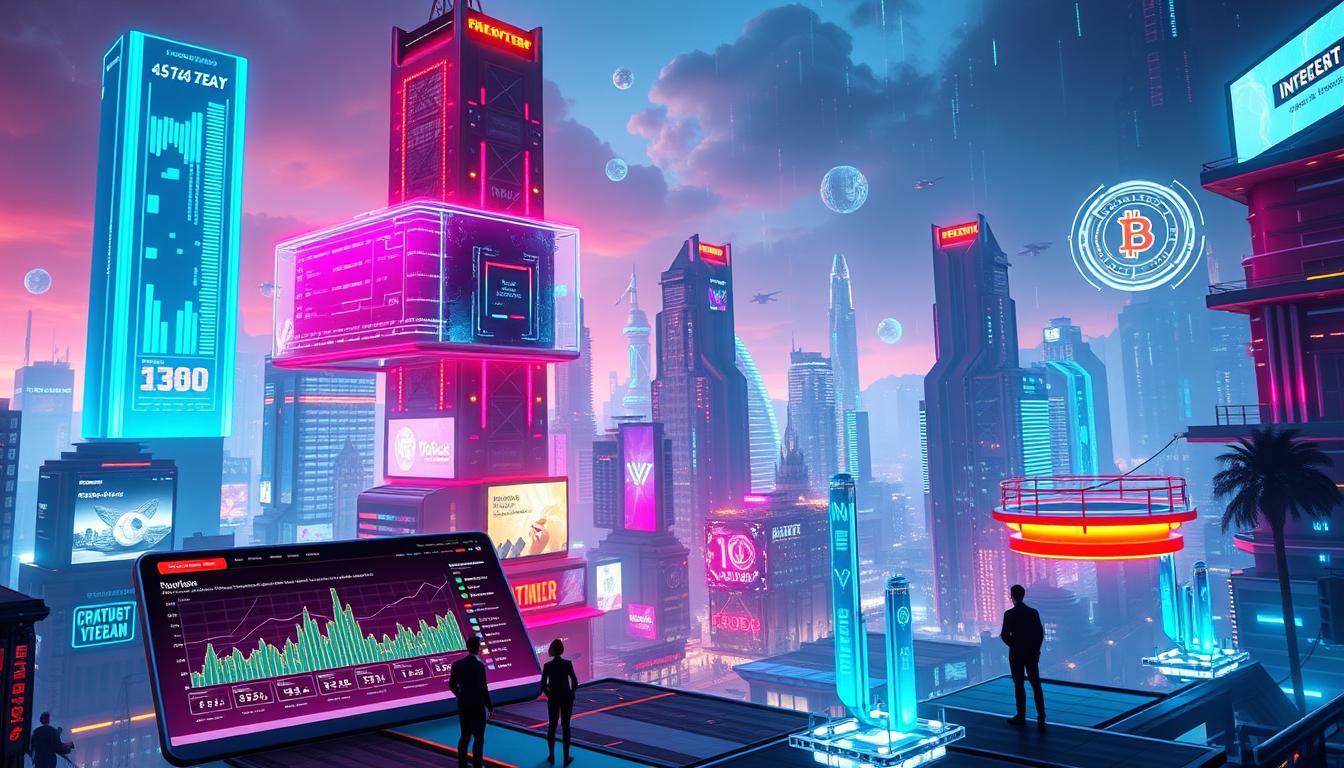
The way people invest in property is changing. A new frontier of digital ownership is reshaping how entrepreneurs and investors approach asset acquisition. Recent data shows this market surged to $820 million in 2023, with projections reaching $5 billion by 2030.
This innovative space allows users to purchase, customize, and profit from online spaces using blockchain-based ownership systems. Unlike physical buildings, these assets exist in persistent 3D worlds where creativity meets commerce. Investors can host events, launch businesses, or lease spaces – all while verifying transactions through decentralized ledgers.
The rise of immersive platforms has created unique opportunities. Brands now design interactive storefronts, while individuals build social hubs or gaming arenas. Smart contracts automate agreements, ensuring transparent revenue sharing and permanent ownership records.
Key Takeaways
- Digital property markets are growing 40% annually, offering high-growth potential
- Blockchain technology enables secure ownership verification and transactions
- Multiple income streams exist through rentals, advertising, and experiential spaces
- Platform selection significantly impacts investment returns and audience reach
- Technical infrastructure like NFTs ensures provable scarcity and transfer rights
Understanding these dynamics helps investors make informed decisions. This guide breaks down platform options, design considerations, and sustainable profit models for modern digital asset management.
Introduction to the Metaverse and Virtual Real Estate
Online spaces now rival physical locations in economic value. Shared digital environments blend social interaction, commerce, and creativity, forming what experts call the metaverse. This interconnected network of 3D worlds allows individuals to work, play, and trade through personalized avatars.
What is the Metaverse?
The metaverse operates as a persistent, collective space powered by advanced computing and blockchain systems. Users navigate these environments using VR headsets or standard devices, participating in activities ranging from virtual concerts to digital storefronts. Major tech firms have invested billions to build infrastructure supporting these ecosystems.
The Rise of Virtual Property Ownership
Digital parcels have become valuable assets, with prime locations selling for over $2 million. Limited supply and growing demand drive this market, as seen on platforms like Decentraland. Blockchain ensures transparent digital property ownership, while smart contracts automate leasing and sales. Early adopters profit through event hosting, advertising, and customized experiences that attract global visitors.
Understanding metaverse land NFT virtual real estate development monetization strategies
Asset ownership enters a new era with customizable online environments. These spaces combine architectural creativity with blockchain-powered economics, offering novel ways to generate income. 3D design tools and smart contracts enable users to transform blank digital plots into thriving destinations.
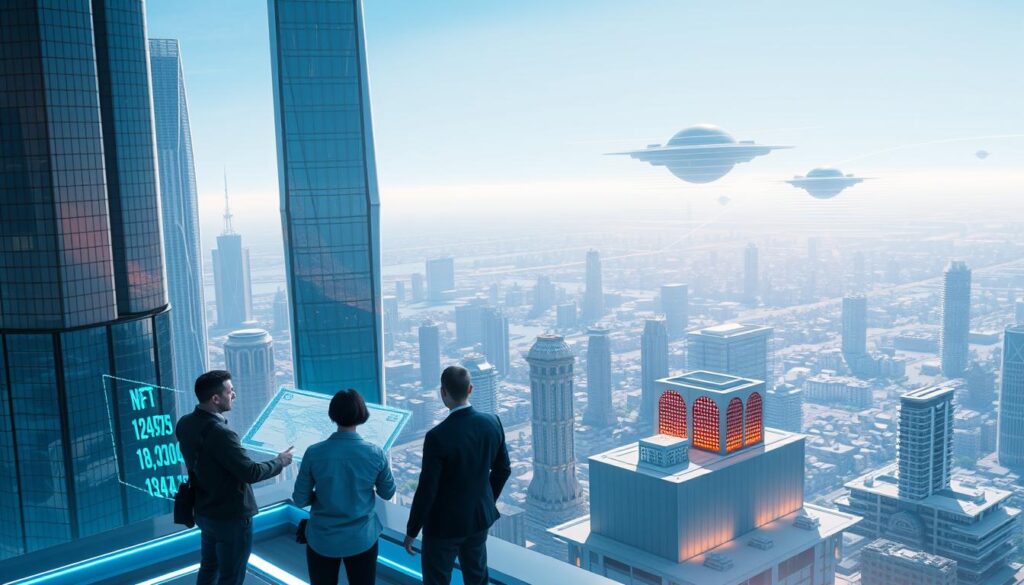
Owners can lease storefronts to brands seeking interactive showcases or create themed entertainment zones. A strategic approach involves analyzing platform user behavior – high-traffic areas often yield better returns through advertising partnerships.
Revenue streams vary based on location and design. Popular options include:
- Subscription-based access to exclusive content hubs
- Commission models for in-world transactions
- Temporary event spaces for product launches
Tokenized deeds ensure ownership transparency, allowing seamless transfers between parties. Successful projects balance aesthetic appeal with functional features that keep visitors engaged. Platform ecosystems determine technical requirements – some support complex VR integrations, while others focus on mobile accessibility.
Ongoing maintenance remains crucial. Regular updates and community interaction help sustain property value. Emerging tools let owners track foot traffic analytics and adjust pricing models dynamically.
Key Concepts of Blockchain and NFT Integration
Digital ownership systems rely on two game-changing innovations working in tandem. These tools create trustless environments where users control assets without third-party oversight.
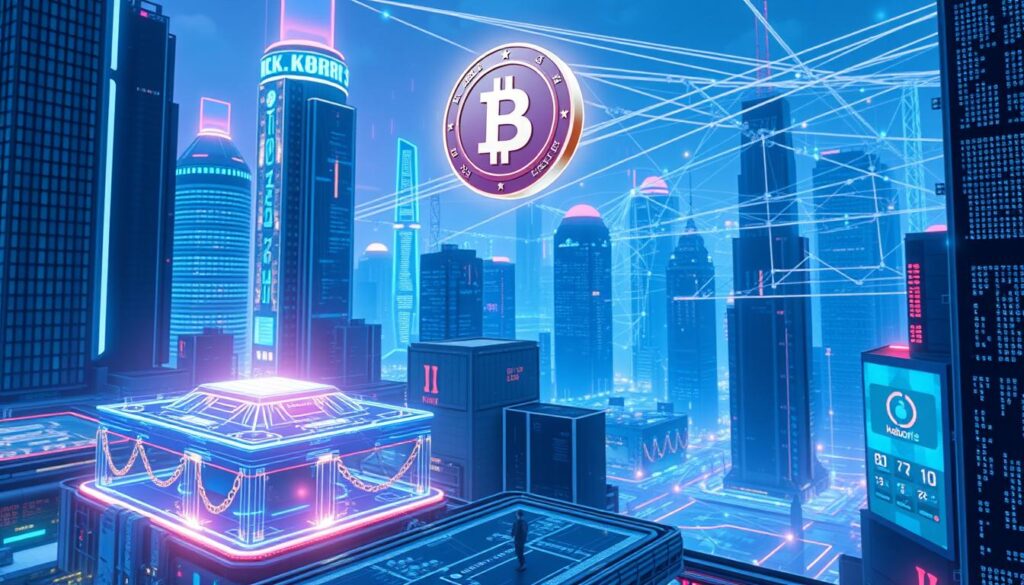
Blockchain Technology in Virtual Real Estate
Blockchain technology acts as an unbreakable digital ledger. Every property transfer gets recorded across thousands of computers simultaneously. This prevents tampering and creates permanent transaction histories.
Smart contracts execute agreements automatically when conditions meet. Rental payments distribute instantly. Revenue shares calculate precisely. These self-operating systems cut paperwork while boosting accuracy.
The Role of NFTs in Ownership and Security
NFTs serve as unforgeable certificates for digital holdings. Each token contains unique identifiers matching specific parcels. Owners prove rights through blockchain-verified digital signatures that hackers can’t replicate.
These tokens store critical details in their metadata:
- Exact coordinates within digital worlds
- Previous ownership timelines
- Custom usage permissions
This system enables cross-platform compatibility. Assets from one environment might interact with others, expanding utility. Investors gain confidence through transparent, auditable records that traditional systems can’t match.
Market Trends and Growth of Virtual Real Estate
Digital property markets are reshaping investment strategies worldwide. Recent analysis shows this sector could expand sixfold by 2030, with annual growth rates outpacing traditional markets. Investors now prioritize interactive spaces that blend commerce with cutting-edge technology.

Market Projections and Valuation Insights
The digital property sector surged to $820 million in value last year. Experts predict it will hit $5 billion within seven years – a 40% annual growth rate. This expansion mirrors early internet adoption patterns, with prime locations becoming digital goldmines.
High-profile sales demonstrate market confidence. One parcel sold for $4.3 million in 2021, setting new benchmarks. Corporate giants like Nike and Gucci now operate branded spaces, attracting younger audiences. These developments create ripple effects across entire platforms.
Three factors drive demand:
- Enhanced AR/VR tools creating immersive experiences
- Global accessibility through cryptocurrency transactions
- Strategic brand positioning in high-traffic zones
Location remains critical, mirroring physical world dynamics. Properties near digital landmarks command premium prices. As user bases grow, early adopters see returns through advertising partnerships and event hosting. The sector’s liquidity improves daily, with 24/7 trading enabled by blockchain systems.
Advantages of Investing in Virtual Real Estate
Digital property markets offer unique advantages that traditional investments can’t match. These platforms combine accessibility with high-growth potential, creating opportunities for both new and experienced investors. Early participants often benefit from first-mover advantages as user adoption accelerates.
Low Barriers and Early Investment Potential
Entry costs start under $500 in many platforms – a fraction of physical property deposits. Geographic limitations disappear, letting anyone participate through cryptocurrency wallets. This accessibility creates growth potential similar to buying tech stocks before mass adoption.
Market data shows properties doubling in value within 12 months in active communities. Investors can acquire multiple small parcels instead of one expensive asset. Flexible ownership models allow partial stakes through tokenized shares.
Revenue Generation Opportunities
Owners activate income streams through creative applications:
- Hosting virtual concerts charging $10,000+ per event
- Leasing billboard space to global brands
- Operating digital storefronts with 24/7 customer access
One investor transformed a $2,000 plot into a gaming hub generating $8,000 monthly. These models scale as platforms grow – active worlds now attract millions of weekly visitors. Automated tools track earnings and optimize pricing across time zones.
Diversification strengthens portfolios by adding assets tied to digital economy growth. Unlike traditional markets, these properties gain value through user engagement rather than location alone. Emerging technologies like AR shopping integrations promise new profit channels.
Exploring Leading Metaverse Platforms
Digital landscapes are evolving rapidly, creating new opportunities for investors and creators. Four major ecosystems dominate this space, each offering distinct tools for building interactive experiences. Prices vary widely, reflecting different user bases and technical capabilities.
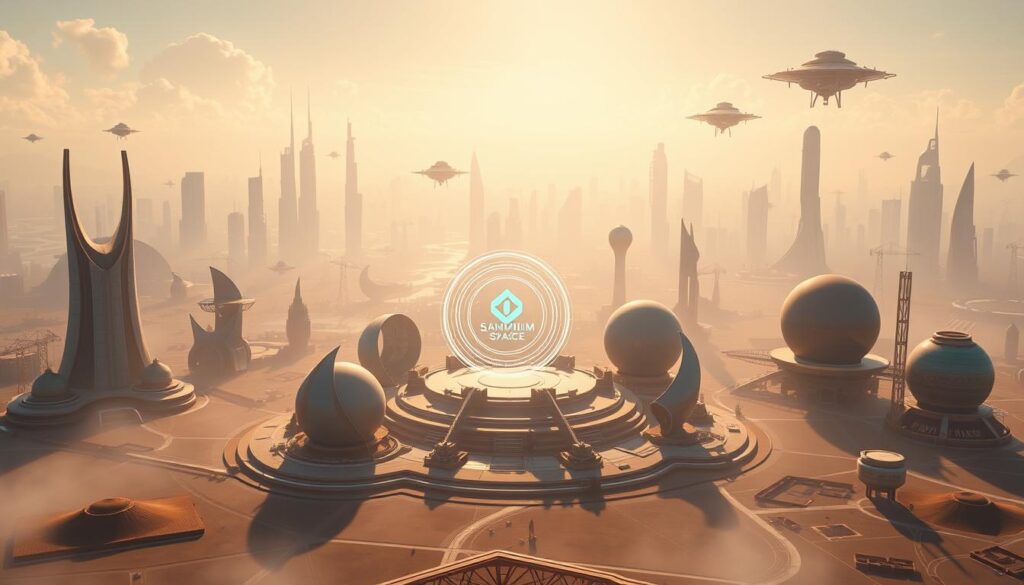
| Platform | Currency | Price Range | Key Focus |
|---|---|---|---|
| Decentraland | MANA | $2k-$50k | Blockchain commerce |
| The Sandbox | SAND | $1.5k-$40k | Gaming experiences |
| Cryptovoxels | ETH | $1k-$25k | Community building |
| Somnium Space | CUBE | $1.5k-$30k | VR immersion |
Decentraland’s Established Ecosystem
Operating on Ethereum, this platform uses MANA tokens for transactions. Users develop properties ranging from art galleries to casinos. Its mature marketplace supports complex business models through smart contracts.
The Sandbox’s Creative Playground
Focusing on game creation, this system rewards designers with SAND tokens. Over 50% of its parcels host interactive quests or challenges. Brands like Atari use it to engage gaming communities.
Cryptovoxels’ Accessible Approach
With lower entry costs, this world emphasizes social connections. Owners build galleries and cafes using simple 3D tools. Its grid-based map encourages neighborhood development.
When choosing ecosystems, analyze transaction fees and governance models. Active communities often signal better growth potential. Cross-platform compatibility remains limited, requiring focused investment strategies.
Acquiring Digital Land and Property in the Metaverse
Navigating digital ownership opportunities requires strategic planning. Savvy buyers focus on platform ecosystems offering growth potential and user engagement tools. Initial steps involve cryptocurrency acquisition and wallet setup specific to each environment.
Selecting the Ideal Virtual Plot
Platform choice directly impacts investment outcomes. Prices range from $1,000 to $50,000 across major ecosystems:
| Platform | Entry Cost | Key Advantage |
|---|---|---|
| Decentraland | $2k+ | Established commerce hubs |
| The Sandbox | $1.5k+ | Gaming community focus |
| Cryptovoxels | $1k+ | Social neighborhood development |
Location analysis separates successful acquisitions from underperformers. Plots near digital landmarks or transportation portals often see 300% higher foot traffic. One Decentraland parcel adjacent to a virtual concert arena sold for 18x its original price within 14 months.
Investors should analyze platform roadmaps and community growth metrics. Emerging neighborhoods in Somnium Space recently doubled in value after VR hardware upgrades. Technical due diligence includes verifying blockchain transaction histories and smart contract terms.
Timing purchases around platform updates or major events can yield discounts. Last year’s Sandbox land sale saw 40% price surges pre-launch. Diversifying across multiple ecosystems reduces risk while capturing varied growth opportunities.
Designing and Developing Immersive Virtual Properties
Crafting engaging digital spaces requires blending technical skill with artistic vision. Modern tools let creators build interactive environments that captivate global audiences. This process combines 3D design principles with platform-specific features to maximize user engagement.
3D Modeling Foundations
Advanced software like Blender and Unity empowers designers to shape detailed structures. Customizable templates help streamline workflows while allowing unique touches. Textures, lighting, and spatial planning directly impact how visitors experience each property.
Successful projects balance aesthetics with functionality. Walkable layouts and intuitive navigation keep users exploring. One luxury brand increased dwell time by 40% using curved architecture that guides movement naturally.
AR/VR Integration Techniques
Mixed reality tools bridge physical and digital worlds. Developers use spatial mapping to create seamless transitions between environments. High-quality headset support remains crucial for immersive experiences.
Cross-platform compatibility expands accessibility. A furniture company boosted sales by letting customers visualize products in their homes through AR overlays. Regular updates ensure properties stay relevant as hardware evolves.
Collaboration between designers and engineers drives innovation. Testing prototypes with focus groups reveals usability issues early. These partnerships create spaces that feel alive, fostering repeat visits and community growth.
FAQ
How does blockchain technology secure virtual property transactions?
Blockchain provides transparent, decentralized ledgers that record every transaction. This ensures ownership history is tamper-proof and publicly verifiable. Platforms like Decentraland use blockchain to authenticate digital deeds, reducing fraud risks.
What revenue streams exist for virtual property owners?
Owners can lease spaces, host events, or sell advertising. Brands like Nike and Gucci use platforms such as The Sandbox for interactive experiences, creating demand for prime locations. Customizable assets also generate resale value.
How do NFTs verify ownership in digital worlds?
NFTs act as unique certificates stored on blockchains, proving exclusive rights to specific parcels or assets. Cryptovoxels uses this system to let users trade or develop their holdings securely.
What factors influence virtual land valuation?
Proximity to popular hubs, platform user activity, and development potential drive prices. Limited availability in platforms like Somnium Space also fuels competitive pricing, similar to physical real estate.
Can businesses integrate physical products into virtual spaces?
Yes. Companies like Adidas and Samsung build branded environments where users interact with digital twins of physical goods. This bridges e-commerce and immersive experiences, enhancing customer engagement.
What tools are used to design 3D properties?
Developers use Blender, Unity, and Unreal Engine for modeling. AR/VR tools like Oculus Rift or Microsoft HoloLens enable real-time testing, ensuring designs align with user experience goals.
Why are brands investing in platforms like The Sandbox?
These platforms offer scalable audiences and creative freedom. Warner Music Group hosts concerts in The Sandbox, demonstrating how virtual events can expand reach beyond physical limitations.
How do users discover undervalued virtual plots?
Analyzing platform growth metrics, upcoming feature rollouts, and community trends helps identify opportunities. Marketplaces like OpenSea provide historical sales data to inform decisions.


